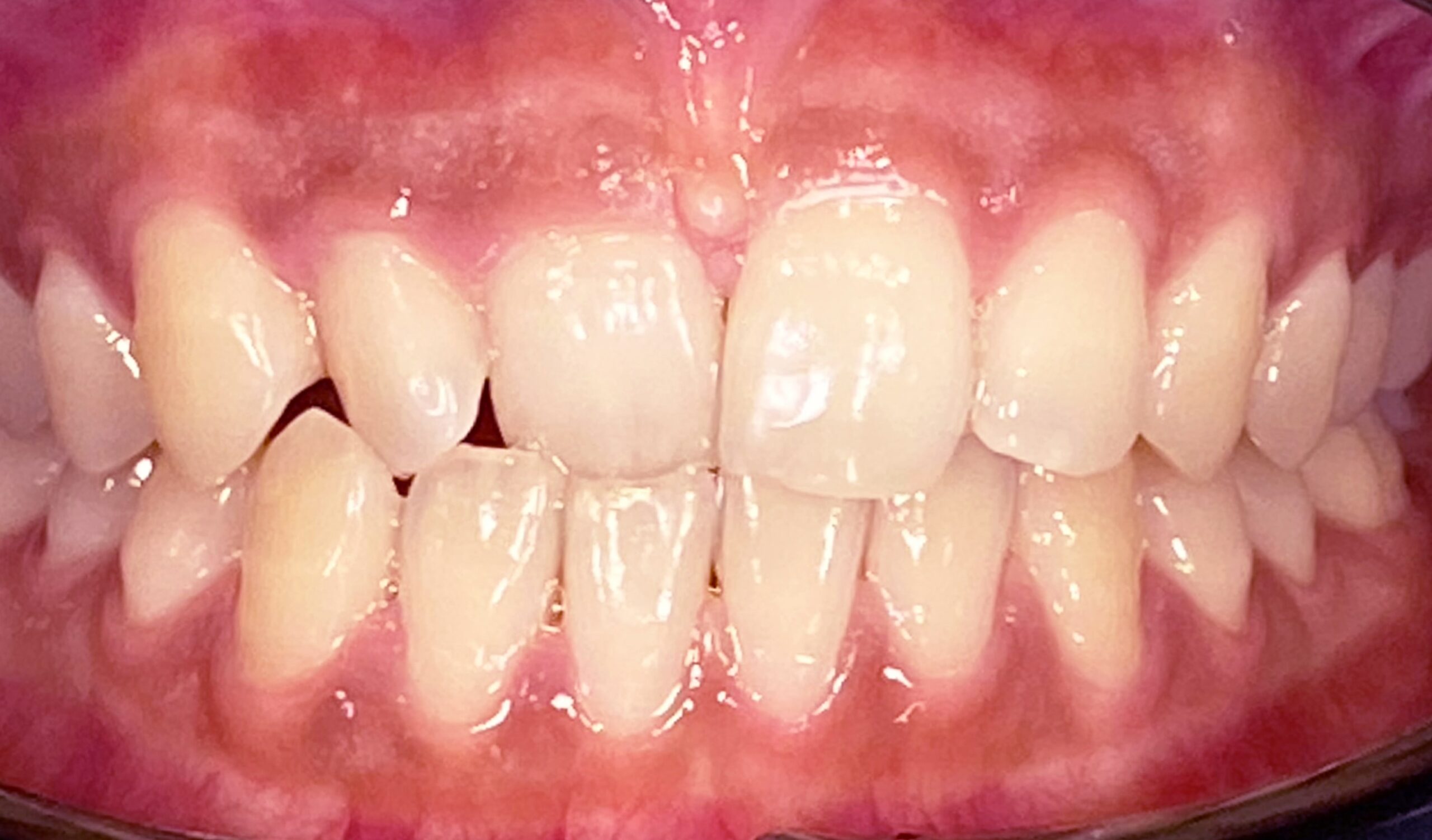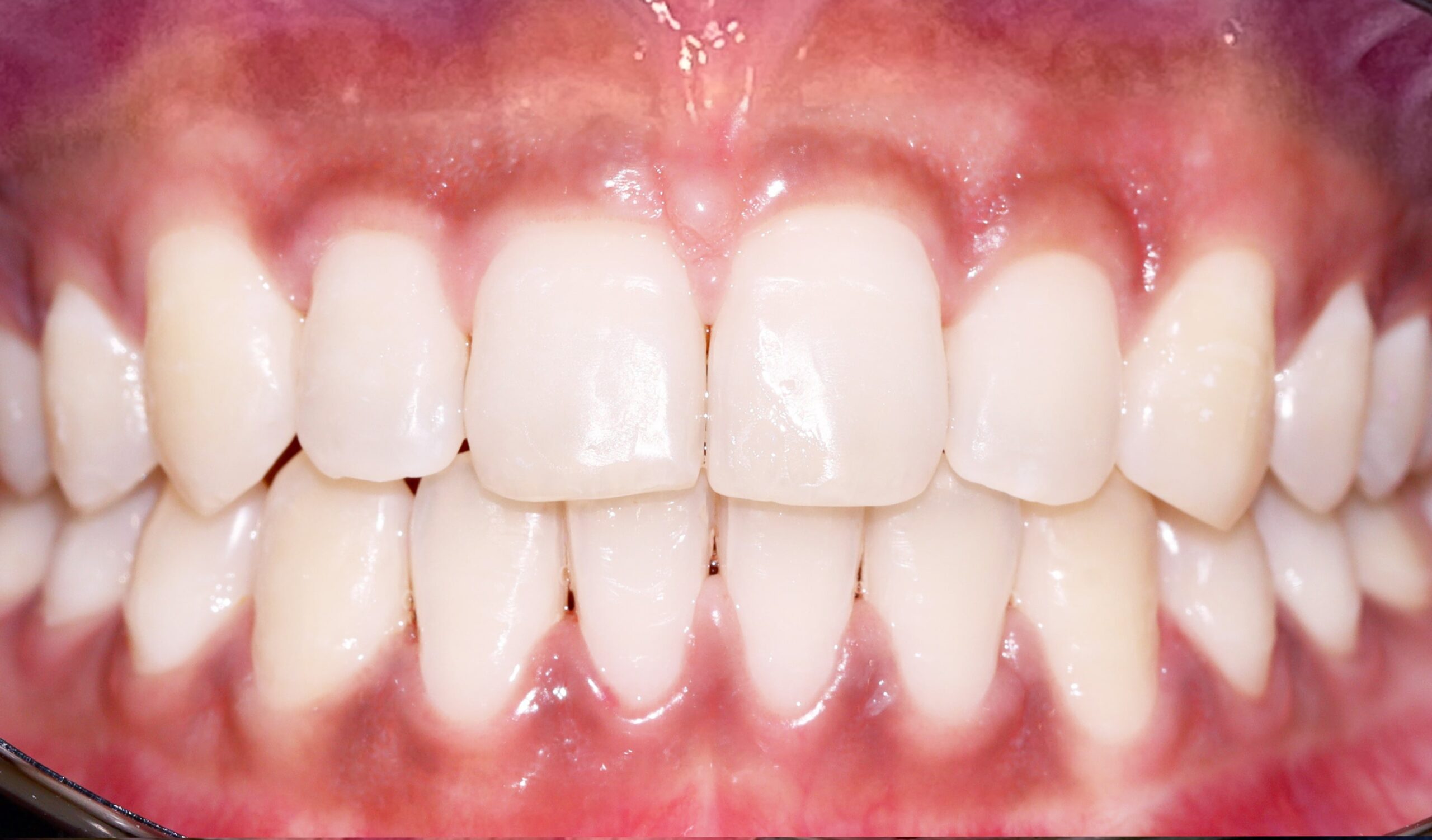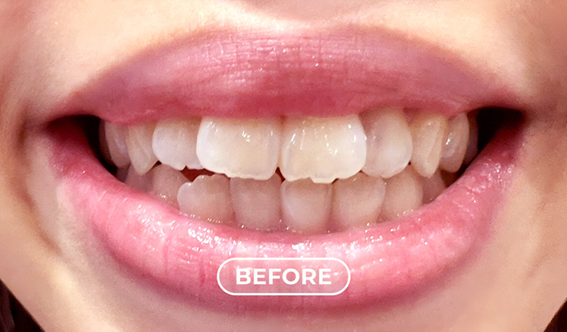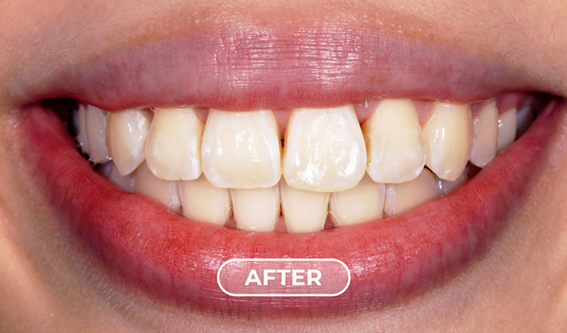Braces
What Is Braces?
Orthodontic braces are commonly known as dental braces. It is a way of straightening or moving your teeth to improve how they look and how they work. Braces improve alignment, provide bite correction and enhance arch form.
*Braces : Before and After Image
How Long Will The Treatment Take?
This depends on how out of position your teeth are, as well as your compliance. It may take 1 year to a few more years.

*Braces : Before and After Image
*Braces : Before and After Image
Do I Need Braces?
A dentist usually recommends braces if you have the following:
- Teeth that are visibly crooked or crowded
- Not enough or too much spacing between your teeth
- Difficulty flossing between and brushing around crooked teeth
- Upper front teeth that stick out – called Overjet
- Lower teeth that bite too far behind your upper teeth – called Overbite
- Upper front teeth that bite behind your upper teeth – called Underbite
- Jaws that click or make noises when you chew or wake up. If left untreated, these problems can result in poor smile, tooth decay, gum disease, headaches and earaches, as well as speaking, biting or chewing problems.
Types of Braces
Your dentist will know what appliance is best for your particular problem but you often have a choice. Braces generally come in three varieties: Traditional Braces, Self-Ligating Braces and Clear Aligners (Invisalign).
Traditional Metal Braces
Traditional braces are the type of braces we commonly see. It is made from a high-grade stainless steel and has metal brackets that are attached to each tooth using a type of cement.
The brackets are linked to each other with an arch wire, which puts pressure on the teeth to cause them to move slowly into the correct position. The arch wires are connected to the brackets using tiny elastics known as ligatures or o-rings, which your dentist will change each time he/she tightens the braces.
Self-Ligating Braces (Damon Braces)
Self-ligating braces is a type of braces that do not need o-rings because the bracket itself held the arch wires to the brackets. This type of braces has become popular with dentists and patients because it provides gentler treatment and requires fewer dental visits. Self-ligating braces has a sliding mechanism thus less friction and pressure on the teeth. It is also easier to keep clean than the traditional. Damon braces offer a clear transparent ceramic material that works the same way but is less visible to others. This became a popular choice for adults.
Procedure for Braces
The first step is an appointment for orthodontic records. The records are a vitally important part of the treatment process. They will provide the orthodontist with much needed information about the patient to make an accurate diagnosis and develop an appropriate treatment plan. Orthodontic records are usually comprised of the following: A clinical exam, Diagnostic pictures, Panoramic X-ray, Cephalometric X-ray, and Impressions (models) of the teeth.
1. Appointment for orthodontic check-up and records
The records are vitally important part of the treatment process. They will provide the orthodontist/ dentist with much needed information about the patient to make an accurate diagnosis and develop an appropriate treatment plan. Orthodontic records usually consist of the following:
- History Taking
- Clinical Examination
- Diagnostic pictures
- Radiographs
- Panoramic X-Ray – fully visualize the entire upper and lower teeth and jaws. This gives information about jawbone, roots, and jaw joint as well as evaluating for presence of extra teeth, impacted teeth or missing teeth.
- Cephalometric X-Ray – it provides important information regarding the position of the jaws and front teeth. It also provides a baseline starting point to monitor growth in younger patients.
- Model Casts of the Teeth
2. Discussion of the present condition
Discussion of the present condition of the teeth as well as the treatment plan and objectives. Cost are also discussed.
3. Braces Installation
After the teeth are cleaned and polished, a cheek retractor is placed to provide a dry field and make it easier to visualize the teeth. The bonding cement is placed on to the back sides of the brackets, which are placed in a very precise position onto the teeth. To cure the cements, the laser light machine is used to harden the bonding and cements. Many orthodontists/ dentist will still place bands (rings) on the back molar, despite the advances in the bonding materials and effectiveness.
The entire bonding procedure can take anywhere between 1 hour to 2 hours.
4. Braces Adjustment (varies depending on the type of braces)
The monthly adjustment gives the orthodontist/dentist an opportunity to evaluate the tooth movement and make the necessary recommendations in treatment. Usually, the original treatment plan predicts the process throughout the treatment however there may be some adjustment along depending on the progress.
A normal adjustment appointment may include the following:
- Remove the colored ties/ open the bracket that holds the wire.
- Remove the wires on the brackets
- Check-up on the progress of the tooth movement
- May or may not have new wires – depends on the progress
- Placement of new colored ties/ closing of the brackets
Since the changes in tooth movement require a minimum of 3 weeks to take effect, most adjustment appointments are made in 3- 8week range. It is not unusual for a patient to feel tightness during and immediately after the adjustment appointment. The tightness and soreness is usually a result of wire changes or adjustments in the wires that eventually results in additional tooth movement.
The recommendations for managing the pain are the same as when braces are first placed. The pain will usually decrease over the next 3-5days.
5. Braces Removal
The process of removing braces and the adhesive is relatively painless, It is possible that some of the teeth, especially the lower front teeth, may be sensitive to pressure. When the bracket is light squeezed, there may be temporary discomfort. After the braces have been removed, adhesive remaining on the teeth must also be removed. This is usually done with a slow or high-speed dental handpiece.
6. Placement of retainers
Orthodontist/ dentist will recommend the type of retainer that fits you best. The following are the type of dental retainers:
- Removable Hawley/ Begg Wrap-around wire retainers
- Removable Clear Plastic retainers
- Bonded Permanent retainers
- GENERAL DENTISTRY
- COSMETIC DENTISTRY
- ORTHODONTICS
- ORAL SURGERY
- PEDIATRIC DENTISTRY
- PROSTHODONTICS
- ENDODONTICS
- PERIODONTICS
- DIGITAL X-RAYS









